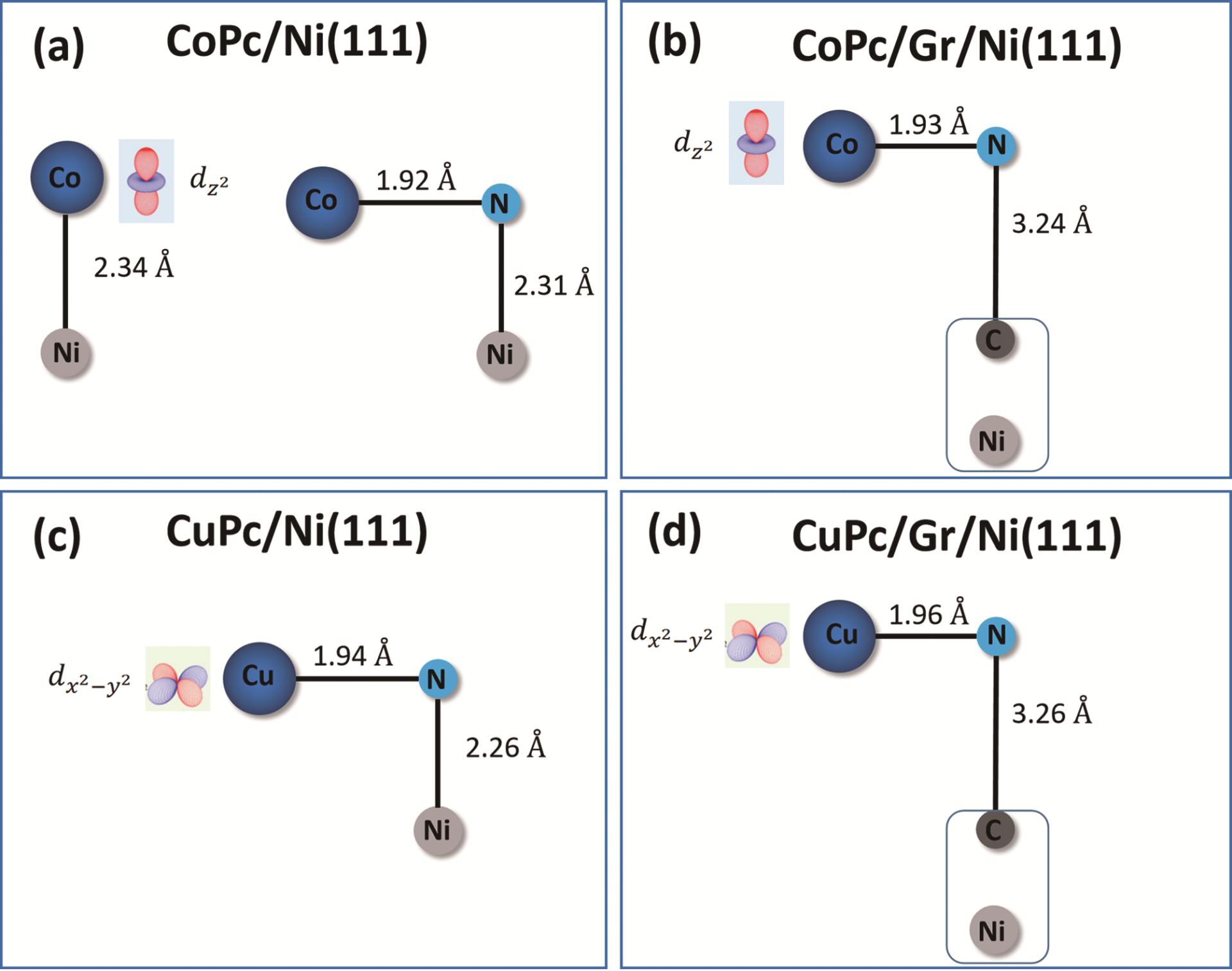Recently, Prof. Xiaoguang Li’ group from the Institute for Advanced Study at Shenzhen University published a paper titled "Graphene-modulated interfacial exchange coupling across organic molecular/ferromagnet spin interfaces" in Physical Review B. Dr. Yu Wang, an associate researcher at the Advanced Institute of Shenzhen University, is the first author of the paper, with Prof. Xiaoguang Li as corresponding authors. Prof. Zheng Wang also participated in this work. This work was supported by National Natural Science Foundation of China.
The manipulation of molecular spin states at the nanoscale is crucial for the advancement of spintronics, quantum information, and magnetic storage technologies, offering the potential for enhanced speed and reduced energy consumption. Transition metal phthalocyanines (TMPcs) and their derivatives have drawn substantial attention in recent years due to their structural simplicity and functional flexibility, which makes them one of the most promising and versatile candidates for related spintronics applications. Recently, the discovery of two-dimensional (2D) materials provides a new playground with remarkable potential for spin-based microelectronics applications for their unique and excellent properties.
Prof. Xiaoguang Li’s group focus on the first-principles design for the single-molecular spintronics integrated with two-dimensional materials graphene in recent years. In this work, we found the magnetic exchange interaction across the TMPc molecule-ferromagnetic Ni(111) interfaces can be significantly mediated by the introduction of a graphene interlayer. Our calculations revealed all 3d magnetic TMPcs (TM=Cr, Mn, Fe, Co and Cu) exhibit ferromagnetic coupling with the Ni substrate. However, the strength of this coupling is reduced in the presence of a graphene decoupling layer, with the exception of CoPc. In the case of CoPc, the original ferromagnetic coupling with Ni(111) can be altered to antiferromagnetic when a graphene interlayer is introduced. We attributed these significant differences to the varied influences on the exchange interaction caused by the intermediary graphene layer. The presence of the inserted graphene layer may block the direct exchange interaction between the TMPc molecule and substrate, while the indirect superexchange interaction facilitated by the nitrogen atoms of the organic ligands is only reduced. These findings provide important insights into relevant experiments and offer a promising strategy to control the magnetic exchange interactions via utilizing graphene at metal-molecule interfaces.

Figure 1 Schematic diagrams of the interaction mechanism in TMPc/Ni(111) and TMPc/Gr/Ni(111) composites (TM=Co, Cu).
Link:https://link.aps.org/doi/10.1103/PhysRevB.109.014428


